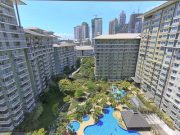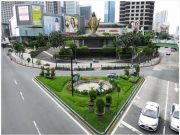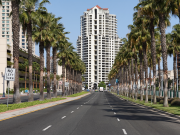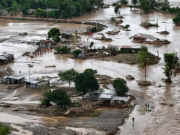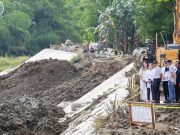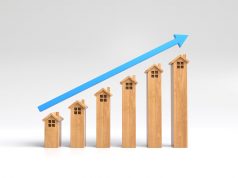Metro Manila has always been the heart of Philippine business. But it’s now too crowded, pushing people, businesses, and investors to look elsewhere. Traffic is terrible due to inadequate infrastructure improvements, soaring costs, and daily life is harder in the capital. Because of this, provincial cities are becoming attractive alternatives and hot spots for investment.
Executive Summary
By Sheila Viesca, Ph.D.
With insights from John Riad, CEO of HousingInteractive
More buyers and first-time investors are interested in provincial areas. Lower prices, better infrastructure, and a desire for a different lifestyle draw them. This report shows how this move away from the city is changing Philippine real estate and what it means for future housing needs by examining key factors. We’ll cover key reasons for this shift, like new roads, the rise of hybrid work, and the impact of technology and sustainable development. We’ll also point out specific provincial growth areas and give you clear insights on where to invest.
Better infrastructure and lifestyle changes are still boosting strong demand in the residential market, particularly in provincial housing markets. More and more people are looking for options beyond big cities. When buying real estate property in the provinces, picking the right location is key to getting the best long-term value and returns. This move from places like Metro Manila to growing provincial centers is a big change for the Philippine real estate market.
1. Why Metro Manila is Full: What’s Pushing People Out
Metro Manila is overflowing because several things make living there harder and harder. Rapid growth has brought vibrant urban energy and urban development, though it has also led to traffic congestion that extends daily commutes. This hurts both people’s work and their well-being.
Property prices have also increased, making it tough for young professionals and families to buy a small home. While the city has a rich history and lively culture, there aren’t enough green spaces or eco-friendly properties, making many people consider other options.
Even though big projects like the Metro Manila Subway and North-South Commuter Railway are being built to help, they often can’t keep up with how fast the city is growing.
So, with better infrastructure in the provinces and the search for affordable housing, people are looking outside Metro Manila. In these provincial areas, they can find better property value, property appreciation, and a healthier quality of life. These main reasons are driving a big move towards provincial living, where homes offer more for your money and a better environment.
Metro Manila at a Breaking Point
Metro Manila, home to over 13 million people, is one of the most crowded cities in the world. Its roads and resources are severely strained, exacerbated by the influx of commercial developments. Traffic jams alone cost the region PHP 3.5 billion daily, according to JICA. This huge financial drain is just one of many problems.
| Metro Manila Challenge | Impact | Relevant Data/Source |
|---|---|---|
| Traffic Congestion | PHP 3.5 billion daily economic loss | Japan International Cooperation Agency (JICA) |
| Surging Real Estate Prices | Median condo prices have climbed 27% since 2020 | Internal analysis of market data (as of 2024) |
| Oversupply Issue | The ready-for-occupancy (RFO) condominium market in Metro Manila continues to face challenges | Colliers Quarterly | Property Market Report – Residential Q4 2024 |
| Flooding Risks | Increased frequency and severity of flooding, especially during the monsoon season | PAGASA climate data, local government disaster reports |
| Insufficient Green Features | Less than 5 square meters of green space per capita, significantly below WHO standards | World Health Organization (WHO) recommendations (9 sqm per capita minimum) |
| High Density | Average population density of over 21,000 people per sq km | Philippine Statistics Authority (PSA) 2020 Census |
On top of the traffic, condominium unit prices have jumped 27% since 2020, making homes harder to afford. In 2023, two out of every three residential real estate loans issued by banks funded home purchases in the provinces. This highlights the booming demand for homes in areas outside the capital. Meanwhile, rental income for owners hasn’t grown much. Adding to this is the risk of flooding and a severe lack of green spaces. Living in Metro Manila has become less appealing for many families and professionals. They’re now looking for better places to live.
2. Investing in Real Estate Outside Metro Manila
Great opportunities for real estate investment, characterized by significant growth, are quickly popping up outside Metro Manila.
- Growing Provincial Cities: Places like Davao City and Iloilo City are booming, attracting local and international investors.
- Major Economic Centers: Developments like the Iloilo Business Park have become key economic hubs. They’re in prime locations with new infrastructure, drawing in businesses and people.
- Diverse Investment Choices: Investors can pick from different property types, including condos, commercial spaces, and industrial parks. All of these benefit from the strong economic activity in these regions.
- High Returns Expected: With steadily increasing property values and promising rental income prospects, these regions present outstanding opportunities for investors to diversify their real estate portfolios and achieve long-term growth.
- Fertile Ground for Investors: As the need for homes, business, and retail spaces keeps rising, the provinces are proving to be a prime area for new and experienced investors seeking strong growth and long-term profits.
The Flight to the Provinces
Unhappiness with Metro Manila is changing what homebuyers are looking for. According to HousingInteractive, searches for properties in the provinces have jumped by 42% in the last 18 months. This is especially true for areas within a 2 to 4-hour drive from Metro Manila. This trend shows people are intentionally moving away from the city’s problems to find a better surrounding community.
This shift is most common among:
- Young professionals who want a better work-life balance. They’re tired of long commutes and high costs, so they choose a better quality of life.
- Families looking for affordable homes and safety. Provincial areas offer more space, better schools, and safer neighborhoods.
- Remote workers and freelancers who can live anywhere with good internet. Their flexible jobs give them the freedom to move.
- Filipinos returning from abroad (balikbayans). Many prefer to settle in their home provinces because of lower living costs and stronger community ties.
“We’re seeing more clients looking to invest outside the NCR not just for weekend homes, but as permanent residences,” says John Riad, CEO of HousingInteractive. “The quality of life, coupled with improving infrastructure and broadband, makes it a smart long-term move.”
3. Hot Provincial Cities: Where Growth is Happening
Across the Philippines, some provincial cities are becoming real estate hotspots. This is thanks to new infrastructure, more job opportunities, and an appealing lifestyle.
- Leading the Way: Cities like Cebu, Davao City, and Iloilo are front-runners, seeing big jumps in homes and business developments.
- Western Visayas is Booming: This area, especially, is getting attention with its growing industrial parks and big companies like Megaworld and Ayala Group investing in its future.
- Attractive Mix: These provincial cities offer a great blend of natural beauty, rich culture, and business potential, making them appealing to investors and homebuyers.
- Boost from New Trends: The rise of online shopping (e-commerce) and the commonness of working from home have also made investors more confident in these major cities. This puts them at the forefront of the changing Philippine real estate market.
- Future Growth: With infrastructure projects enhancing connectivity and accessibility, these provincial hotspots are poised to become key players in the country’s overall real estate growth.
Where the Demand Is Rising
Top provincial destinations witnessing significant residential development interest exhibit a combination of improving infrastructure, economic opportunities, and enhanced livability.
| Provincial Destination | Key Drivers of Demand | Notable Developments/Projects | Affordability vs. Metro Manila (Approx.) |
|---|---|---|---|
| Cavite and Laguna | Proximity to NCR, ongoing infrastructure projects, and economic zones | CALAX (Cavite-Laguna Expressway), LRT-1 Cavite Extension, Daang Hari Road, various IT Parks, and industrial zones | 30-45% more affordable |
| Clark, Pampanga | Clark’s development, accessibility, and emerging economic hub | Clark Freeport and Special Economic Zone, New Clark City, Clark International Airport (CRK) | 40-55% more affordable |
| Iloilo | Robust local economy, livability, master-planned townships | Iloilo Business Park, Megaworld townships, and improving port facilities | 45-60% more affordable |
| Baguio | Climate, education hub, tourism appeal, perceived safety | Ongoing road improvements, limited new developments due to land constraints, and established universities | 30-40% more affordable |
Homes in these cities are 30-60% cheaper than in Metro Manila. Plus, you get fewer crowds, cleaner air, and more conveniences. This big price difference and better quality of life make moving to the provinces appealing for many people.
4. Infrastructure: The Great Enabler
The big move out of Metro Manila couldn’t happen without better ways to get around. The Philippine government’s “Build Better More” program is key here. Major new roads, railways, and airports are being developed, making travel between the capital and the provinces faster and more convenient. This isn’t just about cutting travel time; it’s about making provinces feel closer and more accessible.
Bridging the Distance
For example, projects like the North-South Commuter Railway (NSCR) will soon connect Pampanga in the north, down to Laguna in the south, passing through Metro Manila. This means what used to be a long, difficult drive could become a quick train ride. Similarly, expressways like the CALAX (Cavite-Laguna Expressway) are cutting travel times between popular southern provinces, making daily commutes or weekend trips much more manageable.
| Infrastructure Project | Impact on Connectivity | Current Status/Completion Target | Benefiting Provinces |
|---|---|---|---|
| North-South Commuter Railway (NSCR) | Connects Clark (Pampanga) to Calamba (Laguna) through Metro Manila, significantly reducing travel time. | Partial operations by 2026, full completion by 2028 | Pampanga, Bulacan, Metro Manila, Laguna, Batangas, Cavite |
| NLEX-SLEX Connector | Cuts travel time between North and South Luzon by up to 60%. | Fully operational (as of 2023) | All provinces served by NLEX and SLEX (Pampanga, Bulacan, Laguna, Cavite, Batangas, and Quezon) |
| Expanded Airports | Increased mobility, direct flights, and investment appeal. | Ongoing expansions, new terminals | Bulacan (New Manila International Airport), Clark (CRK expansion), Cebu (MCIA expansion), Davao, Bohol |
| CALAX (Cavite-Laguna Expressway) | Reduces travel time between Cavite and Laguna. | Partially operational, full completion by 2027 | Cavite, Laguna |
Beyond Commutes: Boosting Business and Lifestyle
These new infrastructure projects do more than help people travel.
- Attracting Businesses: Faster ways to move goods and easier access for workers make provincial areas more appealing for more companies looking to set up shop.
- Closing the “Mental Gap”: These developments make the capital and provinces feel much closer. This changes how people decide where to live and work.
- Fueling Growth: Better infrastructure boosts economic activity, making provincial areas more attractive for businesses and residents.
These projects are laying the groundwork, making provincial living and investing a practical and attractive choice for everyone.
5. The Rise of Hybrid Living
The way Filipinos work has changed for the better. Hybrid work is now common, meaning most people don’t need to live right next door to their office anymore. A survey by Sprout Solutions found that 64.2% of local HR professionals see hybrid as the future of work, especially in areas with a strategic location, a huge jump from pre-pandemic levels. This big change in how we work has completely reshaped what people look for in a home.
New Kinds of Homebuyers
Because of this shift, we’re seeing new types of homebuyers emerge:
- Families with Two Homes: These families have their main home in the province, enjoying lower costs and a better quality of life. They keep a smaller condo in Metro Manila for occasional office visits or city trips. This setup gives them the best of both worlds.
- “Work-from-Anywhere” Professionals: These people can do their job from anywhere. They’re looking for places that spark creativity and boost their well-being, without being tied to a specific office location. They prioritize lifestyle over commute.
- Online Entrepreneurs: Many business owners are starting local ventures in the provinces while managing them online. They benefit from lower operating costs and new customer bases in these areas, made possible by reliable internet connections.
What These Buyers Want
These new groups of buyers are driving demand for specific types of communities:
- Fiber-Ready Communities: Homes with fast, reliable internet are a must-have.
- Mixed-Use Developments: Places that combine homes, shops, and offices in one area are highly sought after.
- Townships: These are large, planned communities that blend nature, commerce, and easy connectivity, offering complete lifestyle hubs.
This growing demand is leading to the creation of master-planned communities that provide everything residents need for a well-rounded and comfortable life.
6. HousingInteractive: Your Guide in a Changing Market
As the top online real estate broker in the Philippines, HousingInteractive is perfectly set up to help everyone navigate this changing market, whether you’re buying, selling, or developing properties. Its digital-first approach and huge amount of data give them a big edge.
How HousingInteractive Helps
With the biggest hand-picked list of properties and its special data platform, HousingInteractive provides:
- Up-to-Date Market Trends: They track what people are looking for, what properties are being viewed, and sales data to find the hottest new areas and what buyers prefer.
- Smart Investment Advice: Giving detailed insights into how much property values might grow, how much rental income you can expect, and any potential risks in different provincial areas. This helps you make informed investment choices.
- Smooth Buying and Selling: They offer “concierge-level” support to simplify the entire process for clients. This includes everything from showing properties to handling all the legal paperwork.
“We’re not just here to list properties. We help clients think strategically—about timing, location, and long-term ROI,” says John Riad.
7. The Human Side of the Move: Skills for Success with TalkShop
Moving to a new place is more than just finding a new house; it’s a personal journey of adjustment. As people relocate and switch to working from home or a mix of office and home, they need new skills to thrive in these different environments. This is where TalkShop, the country’s top training firm for leadership and “soft skills,” comes in. They play a vital role in helping people adapt.
Building Skills for New Workplaces
Through its programs across the country, TalkShop helps:
- Professionals become effective virtual leaders: They teach leaders how to communicate and manage their teams well, even when everyone is working from different locations.
- Teams communicate better across distances: They help geographically separated team members work together smoothly and understand each other, no matter where they are.
- Organizations build strong cultures in new offices: They assist companies in ensuring their work culture stays united and consistent, even with teams in different provincial locations.
HousingInteractive and TalkShop are helping make this move from cities to the provinces easier for people and businesses by focusing on practical living choices and the skills needed to succeed in new environments.
8. Case in Point: Iloilo’s Urban Comeback
Iloilo is a perfect example of this big change. It shows how smart planning and investments can completely transform a provincial city. Once a calm capital in the Visayas, Iloilo has blossomed into one of the most livable cities in Southeast Asia.
How Iloilo Transformed
- From Quiet Capital to Vibrant Hub: Iloilo wasn’t always this bustling. It used to be a quieter, more traditional city.
- Strategic Planning: Its rise stems from careful planning and significant investments.
- A Model for Livability: The city has become a benchmark for others, proving that provincial areas can offer an exceptional quality of life.
| Iloilo Transformation Highlight | Description | Impact/Significance |
|---|---|---|
| Iloilo Business Park | A 72-hectare mixed-use township by Megaworld, featuring BPOs, hotels, malls, and residential towers. | Catalyst for economic growth, job creation, and modern urban living, attracting businesses and residents. |
| Iloilo River Esplanade | A model for sustainable urban planning, offering green spaces, pedestrian walkways, and public art. | Enhances livability, promotes a healthy lifestyle, and serves as a blueprint for other cities seeking green development. |
| Sustained Regional Economic Growth | From 2024 to 2026, an average of 52,400 sqm of new office space is expected to be delivered annually, designed to meet the needs of BPO companies seeking large floor plates. | This development highlights strong investor confidence and growing demand, firmly establishing Iloilo as an attractive real estate market. |
| Sustainable Practices | Focus on green infrastructure, walkable communities, and heritage preservation. | Contributes to a higher quality of life, environmental resilience, and cultural richness, differentiating it from other cities. |
9. Investment Outlook: The Decade of the Province
As Metro Manila has fully developed, the next big opportunity for investors is in tier-2 cities and other fast-growing urban areas outside the capital.
Stronger Growth Projections
Real estate experts predict that property prices in specific provincial growth areas will be 8–12% annually over the next five years. This is a higher rate than Metro Manila’s projected 5–7% annual increase. This forecast is based on ongoing infrastructure development, government policies to spread growth away from the capital, and a general increase in economic activity in these provincial areas.
Projected Annual Property Price Appreciation (Next 5 Years)
| Region | Projected Annual Appreciation |
|---|---|
| Provincial Growth Corridors | 8% – 12% |
| Metro Manila (NCR) | 5% – 7% |
Source: BSP’s Residential Real Estate Price Index reports have shown higher growth rates for areas outside NCR in recent quarters (e.g., BSP Q1 2024 report indicated 7.4% YoY growth for AONCR vs. 2.8% for NCR).
Smart Investing in the Provinces
However, to get the best returns, investors need to be smart about where they put their money:
1. Look for Infrastructure Hotspots:
- Prioritize developments near major infrastructure projects like new airports, highways, and railways.
- Why it matters: Easy access ensures long-term value growth and makes properties more desirable for residents and businesses. Properties near such projects often see a “transit premium” in their values.
2. Demand for Digital Connectivity:
- Choose communities that are already fiber-ready or have strong plans for high-speed internet.
- Why it matters: Reliable internet is no longer a luxury; it’s essential for remote work, education, entertainment, and modern living. A study by the Fiber Broadband Association even showed fiber internet service can increase a home’s value by as much as 4.9%.
3. Pick Reputable Developers:
- Invest with developers with a proven track record in planning and building communities in regional areas.
- Why it matters: Experienced developers often create well-planned, sustainable townships designed for long-term value appreciation and a good quality of life. Examples of developers with significant provincial presence and master-planned communities include Ayala Land, Megaworld Corporation, Vista Land, and Filinvest Land.
10. Government Support for Provincial Growth
The national government is actively working to spread development beyond Metro Manila. It’s implementing policies and programs that encourage and support growth in the provinces. This strong cooperation between government plans and actual development is vital for making sure this growth lasts.
| Government Initiative | Objective | Impact on Provincial Growth |
|---|---|---|
| Digital Cities 2025 | It aims to transform provinces into tech and BPO hubs by providing necessary infrastructure and support. | Attracts IT-BPM companies and creates high-value jobs outside Metro Manila, fostering economic diversification. |
| Balik Probinsya, Bagong Pag-asa Program (BP2) | Incentivizes urban migrants to return to their provinces through livelihood and housing assistance. | Addresses urban congestion by promoting rural development and providing opportunities for returning residents. |
| NEDA’s Regional Development Plan | Supports sustainable housing and economic development outside Metro Manila through strategic investments. | Ensures balanced regional growth, improves public services, and creates a more equitable distribution of resources and opportunities. |
| Build Better More Program | Accelerates infrastructure development nationwide, including roads, railways, and airports. | Enhances connectivity, reduces travel time, and facilitates the movement of goods and people, making provincial areas more accessible. |
These programs ensure long-term stability in provincial markets by reducing speculation and promoting responsible investment through clear regulations and supportive development policies.
11. Risk Factors and Strategic Mitigation
Like any significant economic shift, decentralization presents risks that require careful consideration and strategic mitigation.
| Risk Factor | Potential Impact | Strategic Mitigation |
|---|---|---|
| Infrastructure Bottlenecks | May stall short-term momentum if infrastructure development cannot keep pace with demand. | Government: Prioritize and accelerate infrastructure projects, ensure efficient budget allocation. Developers: Integrate self-sufficient infrastructure within developments (e.g., water treatment, power). |
| Urban Sprawl without Zoning Laws | It could erode livability, lead to unplanned development, and replicate Metro Manila’s issues. | LGUs: Implement comprehensive land-use plans, enforce strict zoning regulations, and invest in urban planning expertise. Developers: Advocate for and adhere to sustainable master-planning principles. |
| Speculative Pricing | Can inflate markets prematurely, making properties unaffordable for residents. | Government/Regulators: Continuously monitor market trends and implement measures to discourage speculation, including increased taxes on vacant land and capital gains. Buyers/Investors: Conduct thorough due diligence and rely on expert advice. |
| Lack of Local Job Opportunities | Can lead to residents returning to Metro Manila if local economies don’t grow. | LGUs: Attract investments, promote local industries, support SMEs, and invest in vocational training. Private Sector: Develop mixed-use communities that integrate commercial and business districts. |
| Inadequate Public Services | Strain on health, education, and waste management services due to population growth. | LGUs: Invest in upgrading public services, secure national government support, and promote public-private partnerships. Developers: Incorporate community facilities into large-scale projects. |
Mitigation needs strong teamwork between developers, local government units (LGUs), and residents, supported by clear data and thorough community planning.
12. Sustainability in Regional Development
As the provinces absorb new populations and investments, sustainability becomes paramount. Unchecked growth could replicate the issues people are fleeing from in Metro Manila—traffic congestion, pollution, and overdevelopment.
Forward-thinking developers are integrating green infrastructure, walkability, and low-impact design. In places like Nuvali (Laguna) and Vermosa (Cavite), residential projects are built around natural features and renewable systems. These communities prioritize:
- Rainwater harvesting: Reducing reliance on municipal water sources and mitigating flood risks.
- Solar-integrated homes: Promoting energy independence and reducing carbon footprint.
- Bicycle lanes and pedestrian access: Encouraging active transport and reducing vehicular traffic.
- Waste management innovations: Implementing efficient segregation, recycling, and composting programs.
“Provincial growth must be sustainable or it won’t last. We’re helping clients assess long-term viability—not just cost per square meter,” says John Riad.
13. Filipinos Abroad: Driving Provincial Property Growth
More than 10 million Filipinos live and work overseas. Many are now looking to their home provinces to buy homes, especially as they get closer to retirement or plan to return for good. This large group of Filipinos living abroad plays a huge part in boosting the demand for real estate in the provinces.
What Overseas Filipinos Are Looking For
HousingInteractive has seen a 32% jump in inquiries from Overseas Filipino Workers (OFWs) in the last two years alone. These buyers show a clear preference for:
- Gated Communities: They want homes in secure, exclusive neighborhoods with well-kept shared facilities. It offers peace of mind and a sense of belonging.
- Master-Planned Communities: These large, carefully designed developments offer everything from homes to shops and recreational areas, creating a complete lifestyle.
- Convenient Locations: They often choose spots near provincial cities with good transport links. This balances the peacefulness of provincial life with easy access to city conveniences.
Catering to a Global Market
Real estate developers are now making it easier for OFWs to buy properties. They’re offering:
- Flexible Payment Plans: Making it simpler to afford a home from a distance.
- Online Reservation Systems: Allowing OFWs to reserve properties conveniently from anywhere.
The Impact of Remittances
OFW remittances, the money they send home, are a massive boost to the Philippine economy. In 2023, these remittances reached a staggering USD 37.21 billion. A significant portion of this money is directly flowing into provincial real estate. This capital is a powerful force, further increasing demand and driving growth in key provincial areas.
Here’s a look at the annual OFW personal remittances from 2020 to 2024, including their year-on-year growth:
| Year | Total Personal Remittances (USD Billion) | Year-on-Year Growth Rate (%) | Source |
|---|---|---|---|
| 2020 | 33.2 | -0.8% | BSP |
| 2021 | 31.42 | 5.1% | BSP |
| 2022 | 36.14 | 3.6% | BSP |
| 2023 | 37.21 | 3% | BSP |
| 2024 | 38.34 | 3% | BSP |
14. Technology and Smart Cities in the Provinces
Smart city development is no longer confined to Metro Manila. Cities like Aklan, Bacolod, and Dumaguete City are integrating tech-driven services to elevate livability and attract investment.
The concept of a “smart city,” where technology improves daily life, is no longer just for Metro Manila. Provincial cities like Aklan, Bacolod, and Dumaguete are actively using technology to make residents’ lives better and attract more investments.
Tech-Driven Services for Better Living
These forward-thinking cities are putting in place various tech-driven services, including:
- Smart Traffic and Transport Systems: Using technology to improve traffic flow and make public transportation more efficient. This helps reduce congestion and travel times.
- App-Based Citizen Feedback: Providing easy-to-use apps where residents can report issues directly and communicate with their local government. This makes local governance more responsive.
- Digitized Government Services: Moving government transactions and paperwork online to streamline processes and cut bureaucracy. This makes it faster and easier for citizens to get services.
- Public Wi-Fi and Surveillance: Expanding public internet access and installing surveillance systems to improve connectivity and enhance public safety.
New Clark City: A Model for the Future
New Clark City in Pampanga is a prime example of this smart city movement in the provinces. It’s being built to be the country’s first truly smart and disaster-resilient city, designed with the future in mind.
Key features of New Clark City include:
- Crisis-Ready Government Complex: A dedicated area for government offices to ensure continued operations during emergencies or disasters.
- Hidden, Resilient Utilities: All essential services, including water, electricity, and communication lines, are built underground, making them safer from damage and improving the city’s appearance.
- Green and Open Spaces: A strong focus on environmentally friendly buildings and wide open areas, promoting sustainability and a healthier environment for residents.
- Standard Fiber-to-Home Connectivity: Every home in New Clark City comes with built-in high-speed fiber internet access, essential for modern living and remote work.
Why Technology Matters for Provincial Growth
Smart city technologies in these provincial hubs enhance the residents’ daily lives and signal to investors that these areas are forward-thinking, efficient, and prepared for future growth. This contributes significantly to their attractiveness as investment destinations.
“Technology is no longer a luxury. It’s part of what makes a location livable, bankable, and future-ready,” says Sheila Viesca. “Professionals want to live where services are seamless and governance is responsive.”
15. The Road Ahead: Regionalism with Intelligence
The Philippine real estate narrative is evolving beyond Metro Manila. The nation is entering a transformative phase characterized by decentralized growth, digital adaptability, and shifting lifestyle preferences. This move toward developing regional areas is motivated by practical needs and exciting new possibilities.
“Our goal is to help clients see beyond the skyline,” says John Riad. “The future lies in communities that offer not just property, but purpose, access, and balance.”
Conclusion: Provincial Growth is National Growth
The “urban exodus”—people moving out of big cities—isn’t a step backward. Instead, it’s a leap forward, changing how Filipinos live, work, and invest. This shift shows that the Philippine economy is maturing, and its urban areas are becoming more balanced.
HousingInteractive’s online real estate tools and TalkShop’s leadership and skills training are helping make this move more than just a change of address. They’re supporting people and communities to succeed and grow in their new homes.
The provinces offer more than just cheaper land, they provide a sustainable lifestyle that supports balanced, steady growth, benefiting the country.



